- Happy New Reiwa everyone! (… a Japanese local joke …)
Development in 2018
- Jumping right into this year’s progress report! (Yes, I’m hasty!)
- In last year’s annual progress report, we announced the following two important points:
- To develop the new ver.4 source code with Java language from scratch. Will complete the coding or at least its core component.
- To publish ver.4 at the ASMS (American Society for Mass Spectrometry) Annual Conference on Mass Spectrometry and Allied Topics.
- We are happy to announce that we have achieved both these missions! (Bravo!)
- First off, regarding the development of ver.4: We have completed the implementation of the following functions:
- Basic file read (mzML)/write functions (except for metadata)
- Display of spectra/chromatograms (waveforms)
- Heatmap creation, superimpose, mirror plot
- Source codes for the above are available on GitHub and can be downloaded for anyone who’s interested to check the implementation out and/or remodel them. Note that at this point this is just a “publication of source codes”; users need to build upon these source codes for actual use (for those of you who understand when we say “build”).
- I’m sure you are thinking: “That’s too difficult. Why not prepare a ‘use-as-is-after-download’ package?” YES! We agree with YOU. We actually plan to prepare an installer package; however, the current implementation is limited to core functions, and we believe at present does not cover enough functions for practical use. Hence, we are planning to generate an “installer package” after the essential functions have been implemented; and we expect to release it in 2019.
- We plan to use an external file reader program (like ProteoWizard), which will require a “data exchange function with external software.” This function is under development as of June 2019.
- One of the most remarkable features of the original Mass++ was its “ability of reading files individually formatted by various hardware vendors”; it was the original motivation for the development of Mass++. However, such a development requires cooperation of multiple hardware vendors and numerous software testers, and in some cases, the test requires the hardware itself: the mass spectrometer from the vendor. In other words, operation of such development is impossible with a “non-funded, small-team developers” project just like our current Mass++ project.
- Recently, an open-source package ProteoWizard has been developed synchronizing with the development of Skyline, an open-source package especially for the quantitative analysis of SRM data. We can rely on and utilize this package to develop the file-read function; our development focus will therefore be on other unique functions. In particular, our focus is now on the “quick and simple data viewer,” a function still lacking among the existing excellent open-source software for mass spectrometry.
- The concept of ver.4 has not yet been made public although we have disclosed it on this website (in last year’s activity report). Hence, we chose the “ASMS (American Society for Mass Spectrometry) Conference on Mass Spectrometry and Allied Topics” as its debut site.
- ASMS, as everyone knows, is without a doubt the biggest academic society for mass spectrometry in the world, and its annual conference is more active and massive than its international counterpart IMSC (International Mass Spectrometry Conference). Poster presentations are one of the core events at ASMS Conference where an astounding four hours are allotted for poster session presenters.
Presentations in 2019: Poster Presentation at ASMS
- San Diego!

- As San Diego is the homeport of the Third Fleet of U.S. Navy, on the right side of this photograph you can see the retired USS Midway (its homeport was once in Yokosuka, Japan), now serving publicly as a museum. This statue was created based on the famous photograph “V-J day in Times Square” on the cover of LIFE magazine, and is now one of major symbols of San Diego.
- Here we are at the San Diego Convention Center, the venue of ASMS Conference 2018.
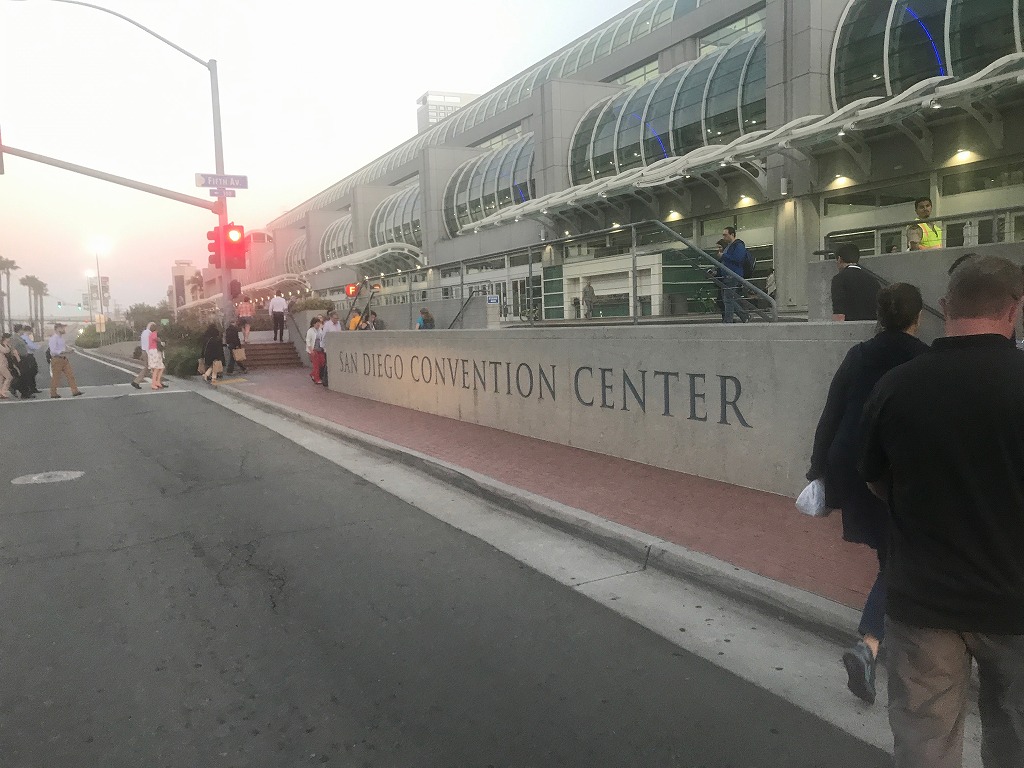
- Well, as we imagined, everything is large-scaled compared to things (including conferences) in Japan (I had the same impression in Indianapolis last year at ASMS Conference 2017) . See,
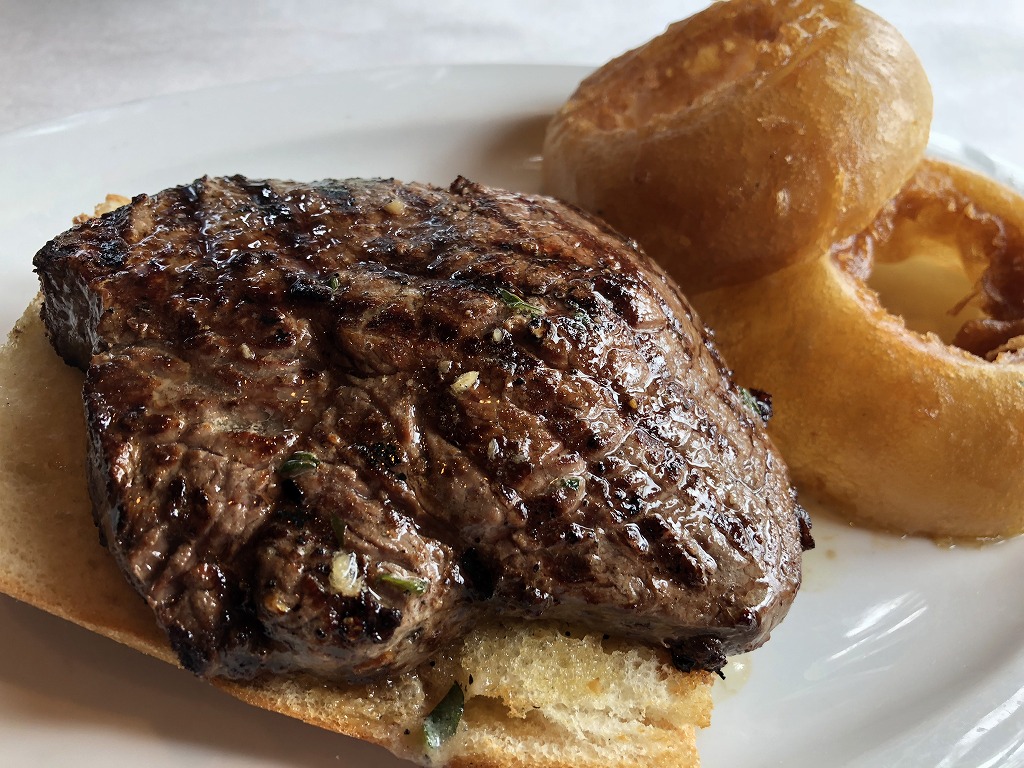
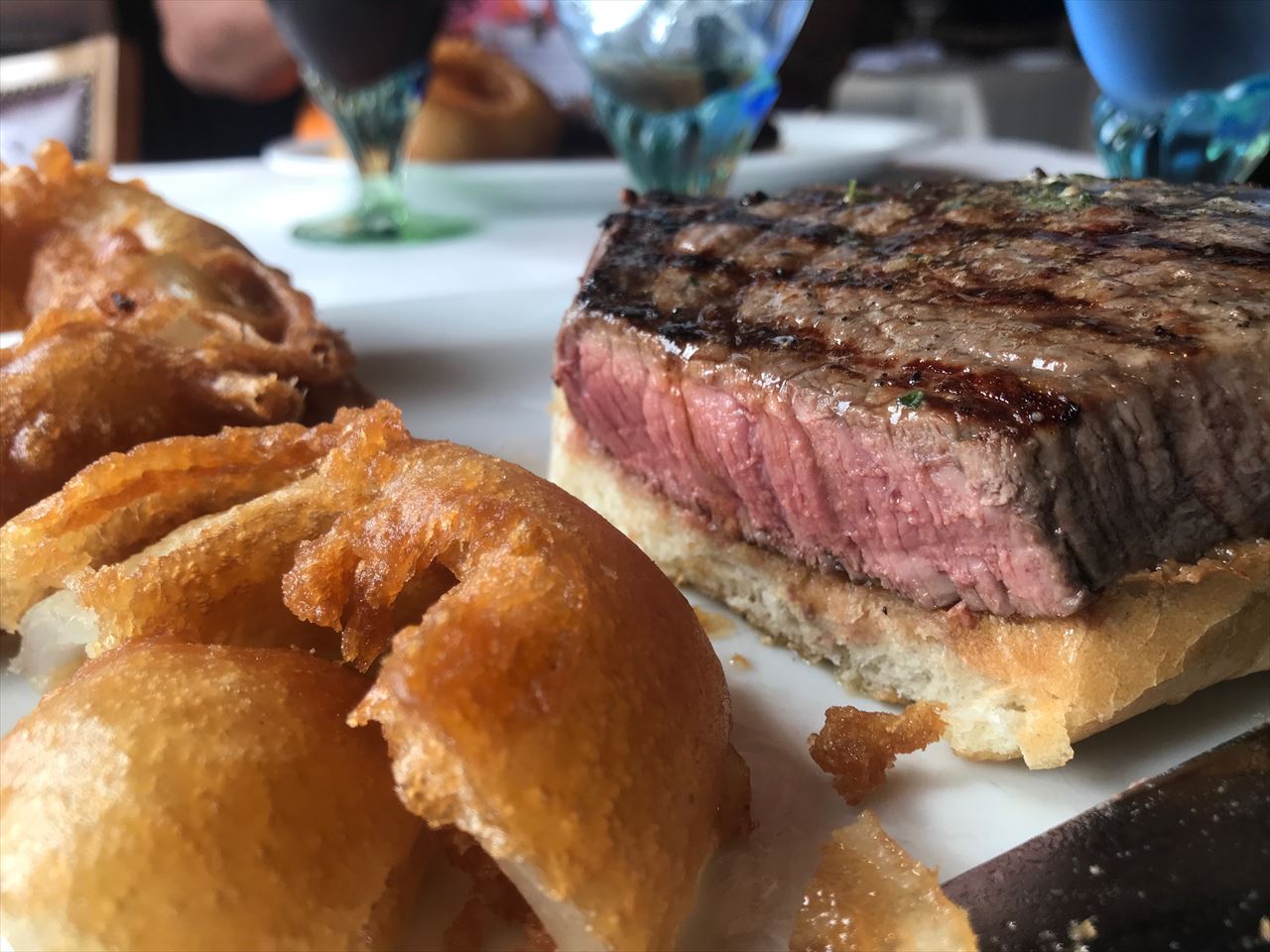
- !
- Oh sorry, wrong picture. This picture was shot not at the venue, but at the restaurant near the venue. This steak wasn’t that big though…. it tasted great anyway.
- Undo 😛 then see,
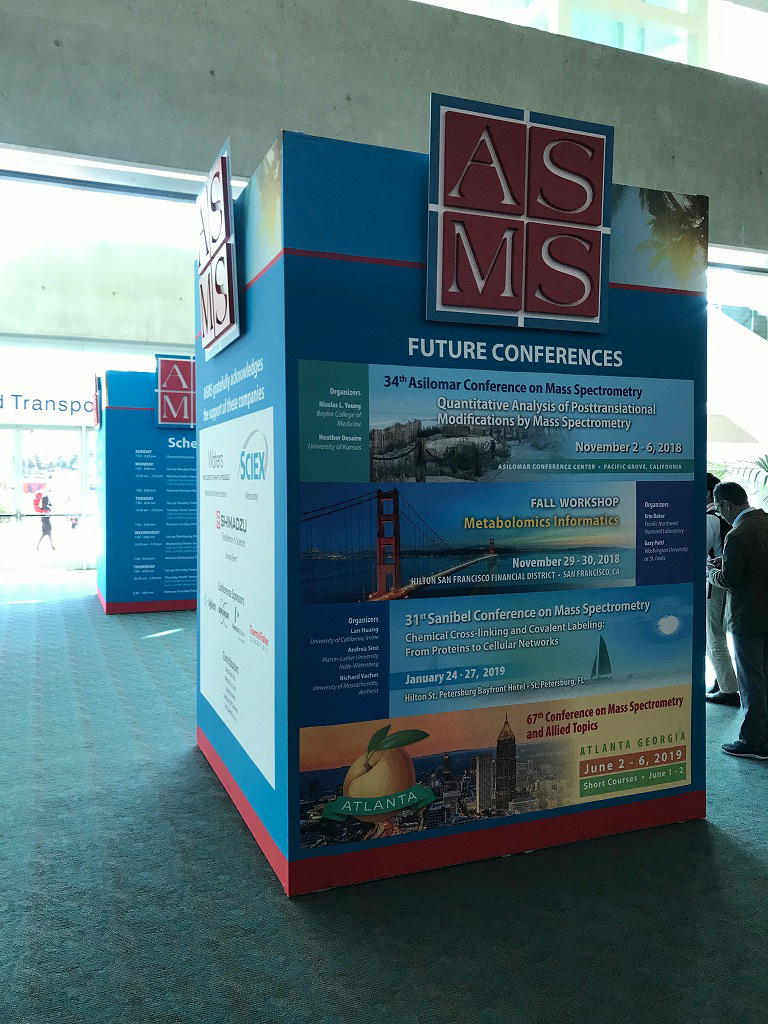
- The entrance of the venue and the poster session room.

- The poster sessions were held here. Although the room seems spacious, it became extremely crowded around popular posters (this picture was taken during setup time). Two posters in the foreground are our own posters: one about Mass++ and other about the jPOST database (which has no direct relation to Mass++, but some of our developers are involved in both projects). The poster number tags are wrong here (the numbers go as 413, 414, 416, 415 ….), so we swapped the posters after taking this picture.
- As you can see the poster size is also larger than the ones presented at Japanese conferences. We had to be aware of the size differences for everything… we inevitably encountered a tragedy (comedy?) as you can see in the following photos:
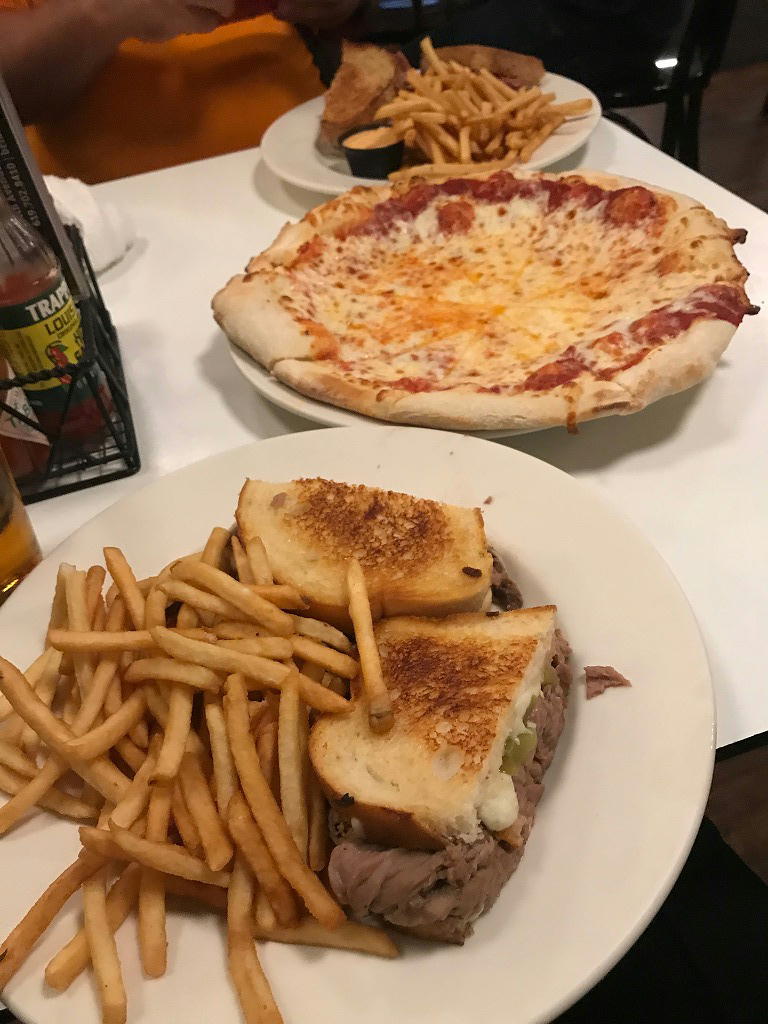
- Well, the day we didn’t get a chance to grab dinner, we went to a 24-hr diner at 11 p.m. and ordered “roast beef” and “corned beef.” We thought we needed bread but accidentally ordered pizza instead and this is what we got (we won’t talk about the absence of vegetables…). Oh so they were “roast beef” and “corned beef” sandwiches.

- Well true,
sandwiched between the bread slices were stacks of roast beef, cheese, and
pickles. The menu wasn’t lying, it just didn’t clarify (or not to our
eyes) that these dishes were sandwiches ;(
- By the way, I heard that pizza is classified as vegetables in U.S. school lunches… is it true? The source of this information said “because tomato sauce is on the pizza.” If that’s really the case, then we sure ate vegetables in this dinner. 😛
- Anyway, the two of us (both were Mass++ developers) ate everything on the plates (plus beers and cokes). After paying, a young African-American waiter followed after us, and gave me a fist-bump. I guess the waiters were betting that we wouldn’t be able to finish everything? 😛
- Adding to this, we enjoyed great sushi in San Diego; the most distinguished difference is also the SIZE of sushi.
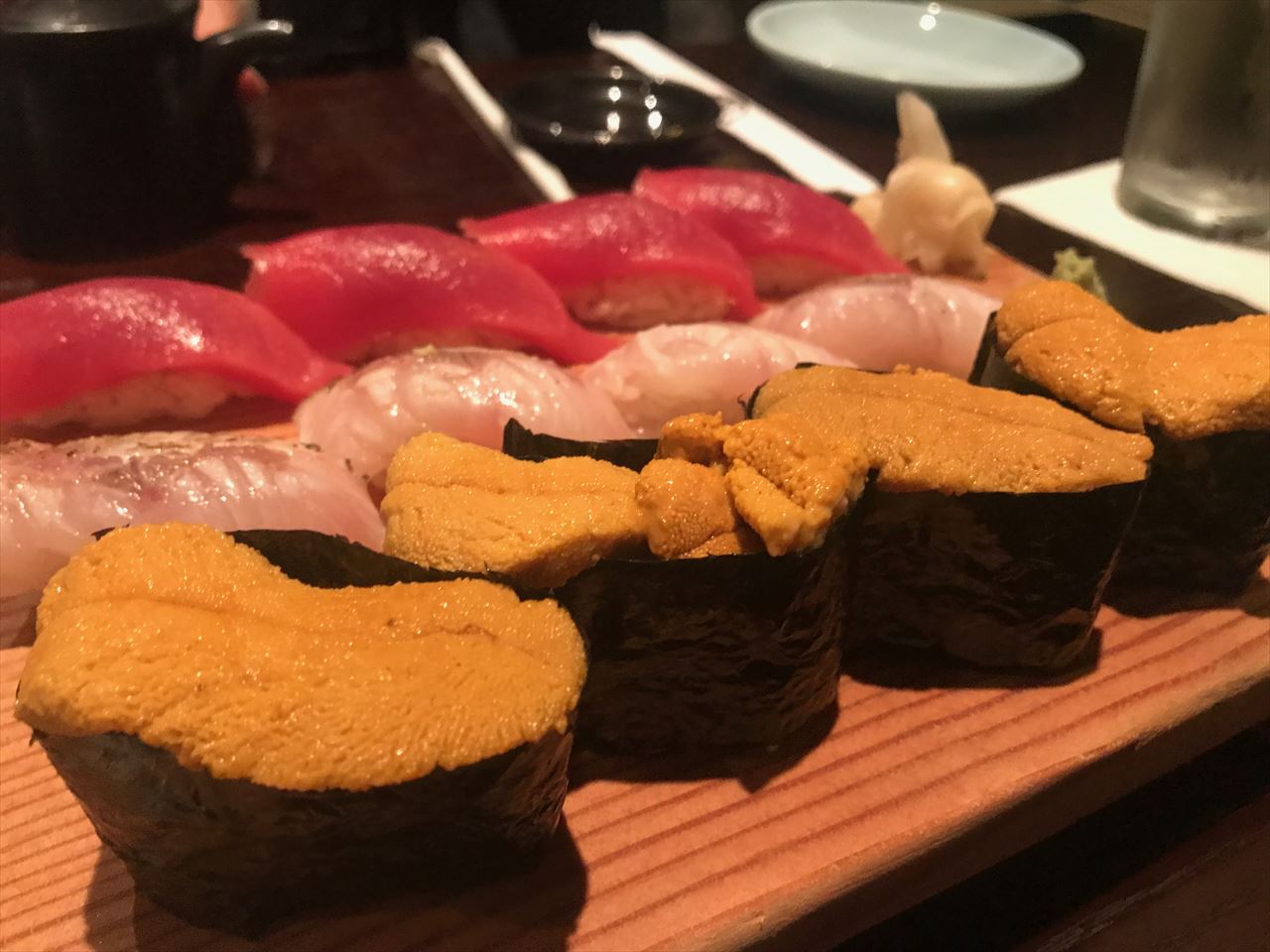
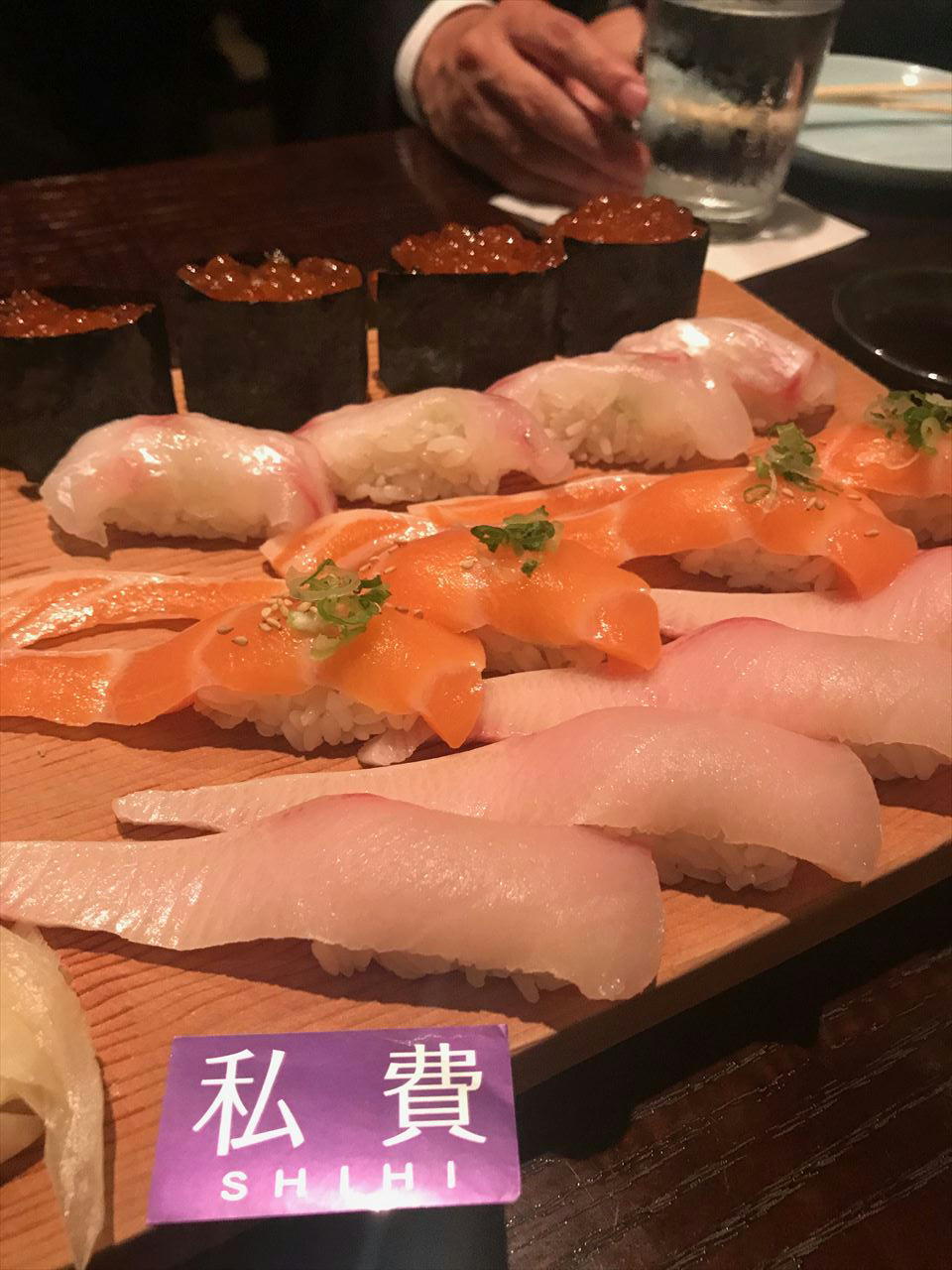
- Such a nice and large fish slices! The meal cost us more than $100 each; in Japan, something like this may cost more than $200 per person. Duh ….
- Ok this report is going COMPLETELY off course. We’re supposed to be reporting about our experience at the conference in San Diego, not what we ate in San Diego. Our Mass++ poster looked like this:
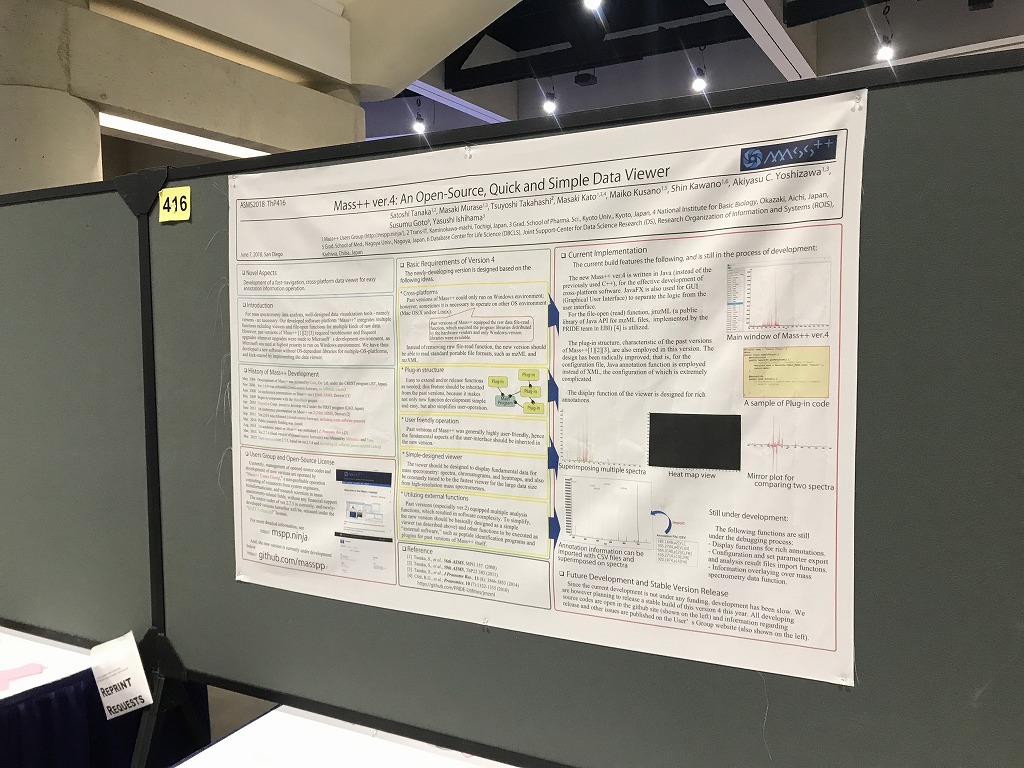
- It would have been nice to include more screenshots, but unfortunately, the codes for data display had not been implemented yet at that time; we focused on presenting the newly implemented basic core programs.
- However, in the end, we had so many attendees visit our poster that we didn’t even have time for a break, and received more than 10 reprint requests. The last time we presented on Mass++ at the ASMS Conference was in 2013, and we published a paper the following year. We were pleasant with the positive feedback received even after several years since our last appearance to the community, and are hopeful for the further development of ver.4.
- We hope to continue to present at the ASMS Conference every year or at least every other year.
- To summarize San Diego: Great dishes, we enjoyed them!
Presentations in 2018: Others
- In 2018, our only presentation was the poster presentation at the ASMS conference to present Mass++ ver.4. We did however introduce Mass++ (ver.2.7.5) in a scientific book (Introductory textbook for bioinformatics in Japanese language published by Kodan-sha).

- (Sample figure (partial, as the figure is copyrighted by Kodan-sha) in the published book. The figure above was provided directly by the corresponding chapter author of this book (me).)
- Next time around, we hope to present ver.4!
Agendas for 2019
- In 2019, we will continue to develop ver.4 towards implementation of a functional build, and to develop the installer. In particular,
- Mass peak annotation
- Cooperation with external software (e.g. peak picking)
- Improvement of user interface
- When these become complete, we can move on to developing the installer.
- As we decided to focus on our goals described above, we decided against presenting at the ASMS Conference this year. Our priority was on the solid development of a functional implementation rather than the implementation of an eye-catching presentation-oriented function. We hope to present at ASMS Conference 2020, which will be held in Houston, TX (known for the famous phrase “Houston, we have a problem” – did you know the actual words initially were “Houston, we’ve had a problem”?).
- Instead, we are considering to present at the JPrOS (Japanese Proteomics Society, a.k.a. JHUPO) Congress or the HUPO World Congress, as the current development is more related to proteomics than to metabolomics.
- Well, when will be able to release the first ver.4 “installer”? That is an exciting yet worrisome question…TBA.
